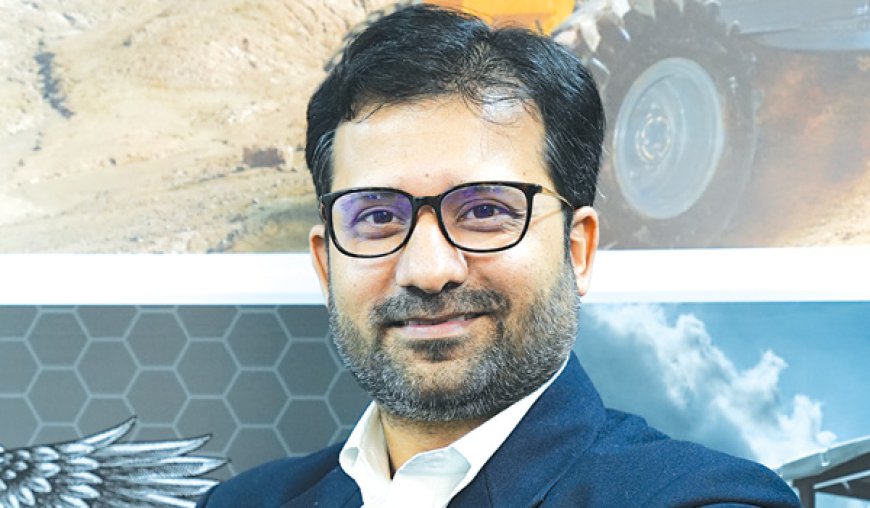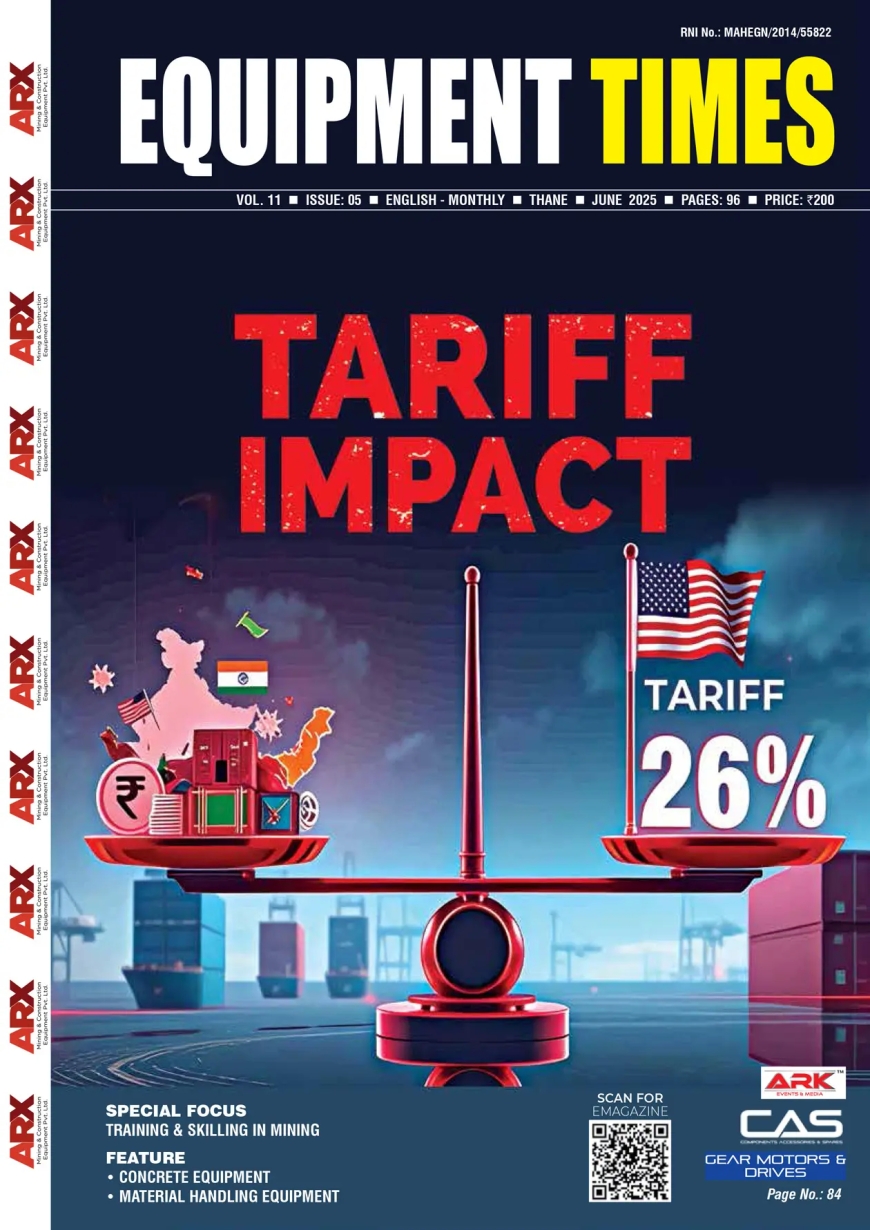Our focus on technological advancements is evident across our range.
Welcome to the new Case—a brand steeped in 180 years of history, evolving and rejuvenating itself time and again since our establishment in 1842.

Shalabh Chaturvedi
Managing Director (Construction Equipment) India Region, Case New Holland Construction Equipment India
What is your focus for Excon and how do you look forward to Excon? How has your response been this year?
Welcome to the new Case—a brand steeped in 180 years of history, evolving and rejuvenating itself time and again since our establishment in 1842. Amidst a rapidly changing world, we believe it is time to renew ourselves once more, particularly in terms of technology. Our legacy of merging great iron with cutting-edge technology continues, adapting to the evolving landscape of fuel types, customer interactions, and overall technological integration within our machines. Our focus on technological advancements is evident across our range. All our machines are now equipped with state-of-the-art telematics, ensuring seamless connectivity globally. Whether you purchase a Case machine in India, Africa, South America, or anywhere else worldwide, our telematics effortlessly connect, irrespective of service providers like Airtel, Vodafone, BSNL, or others. In addressing emissions, our display showcases stage 5 BS5 ready machines and those employing electrohydraulic technology. These innovations significantly reduce fuel consumption, directly correlating to lower CO2 emissions, contributing to sustainability—a principle we wholeheartedly embrace. Moreover, our exhibit highlights the emergence of electric machines, particularly emphasizing their practical advantages, especially on the compact side. These advancements aim to solve real-world challenges faced by our customers, underlining our commitment to progressive solutions. Lastly, safety takes center stage at the Case stall. We prioritize embedding safety at the core of our customer interactions, ensuring it remains a fundamental aspect of our approach. At Case, our dedication to innovation and customer-centric solutions continues to define us as we venture into this new chapter of our legacy.
There is a strong perception worldwide and in India also that technology comes at a cost. Are we not investing heavily on R&D so technology comes at an affordable price?
There are dual facets to technology adoption—initially, it incurs a cost. However, with increased implementation at scale, the expenses diminish. Essentially, there exist two categories of costs: the upfront investment cost and the variable cost associated with technological integration. Responsible entities, such as Case and several multinational competitors, emphasize substantial investments in Research and Development (R&D) to introduce innovative technology. The initial aspect involves the upfront investment, while the latter encompasses the variable expenses incurred as technology features are integrated into machinery.
The pivotal factor influencing this variable cost is the scale of implementation. When more companies within the industry invest in technological enhancements, economies of scale come into play, thereby reducing the overall cost of technology.
How are you managing scalability compared to demand?
We’re actively addressing scalability due to India’s heightened significance within CNH on a global scale. Our commitment to India has expanded notably. Previously, we operated with two legal entities—one catering to agriculture and the other to construction. Presently, we’ve grown to four legal entities. Our recent addition includes the CNH Capital, an NBFC offering retail finance to customers and supporting our dealers with funding. Another entity is the India Technology Center, functioning as a Global Capability Center (GCC), housing top-tier engineers from esteemed institutions like IITs and NITs. They’re dedicated to tackling technological and forward-thinking challenges not just for India but on a global scale.
What are your strategic growth priorities for the next five to 10 years?
Our growth priorities revolve around two main aspects. Firstly, we aim to expand our presence in India, leveraging it not only for the local market but also as a gateway to global markets. This expansion involves a concerted effort to increase our footprint within India.
What are the investment that you are planning for next few years? And something about the women workforce and your initiatives on training.
From an investment perspective, our commitment to CNH remains robust. Over the past decade, we’ve directed approximately $200 million across various segments. Looking ahead, we’ve secured approvals for an additional $40 million in investments over the next two years. Our strategy operates within a dynamic, rolling strategic business plan, ensuring continuous evaluation and consideration of new projects.
In terms of fostering diversity, equity, and inclusion (DEI), we’ve made significant strides, particularly in enhancing female representation across all segments of our business. Recent statistics indicate that nearly 20% of our fresh hires this year are women, across diverse positions and functions. Our upcoming launch of the Skidsteer Loader at Excon underscores our dedication to gender diversity. This assembly line, entirely managed and operated by women in India, showcases our commitment to empowering and promoting women in traditionally male-dominated sectors.
Regarding training and skill development initiatives, our efforts are twofold. Firstly, through our corporate social initiative named “Hunar,” we’ve established an independent school aimed at skilling school dropouts. Recognizing that many dropouts leave education due to economic or motivational reasons, we’ve implemented a comprehensive 45-day residential program, offering a robust skill development regimen. We’ve successfully trained and placed close to 300 school dropouts, with approximately 75% securing placements, fostering positive community impact.
Hits: 6








